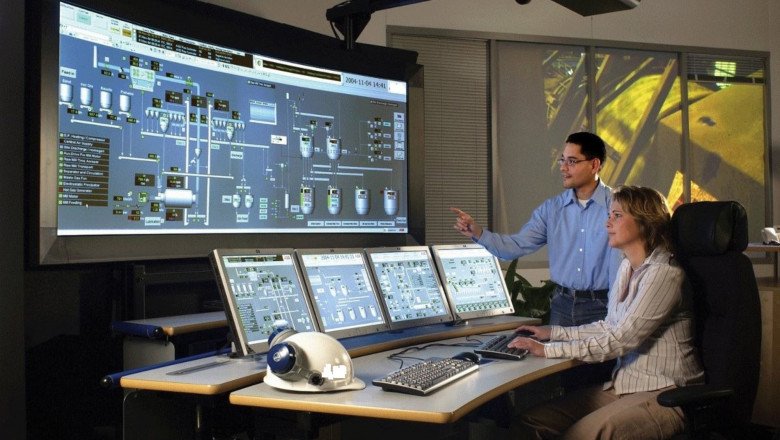views
As industries continue to advance in automation, precision engineering, and infrastructure development, the vibration control system (VCS) market is undergoing a significant transformation. These systems, designed to mitigate unwanted vibrations in machines, vehicles, and structures, are no longer niche technologies they’re essential components for safety, efficiency, and product longevity.
This article offers insights into the vibration control system market, highlighting key growth trends, emerging technologies, end-user demands, and competitive dynamics that are shaping the global outlook.
What Are Vibration Control Systems?
Vibration control systems reduce or isolate vibrations to improve performance, comfort, and structural integrity. Depending on their complexity and use case, these systems can be:
-
Passive (e.g., rubber mounts, bushings, isolators)
-
Semi-active (e.g., adaptive dampers)
-
Active (e.g., systems that use sensors and actuators to counteract vibrations dynamically)
They are used in a wide variety of sectors, including:
-
Automotive (for ride comfort and noise reduction)
-
Aerospace (for flight stability and structural safety)
-
Industrial machinery (to protect equipment and maintain precision)
-
Construction (for seismic control in buildings and bridges)
-
Medical and electronics (where even micro-vibrations can impact performance)
Market Size and Outlook
The vibration control system market is currently valued at around USD 4.2 billion (2024) and is projected to grow to USD 6.8–7 billion by 2030, reflecting a compound annual growth rate (CAGR) of 5–6%.
This upward trajectory is driven by multiple converging factors:
-
The rise of electric and autonomous vehicles
-
Expanding aerospace and defense investments
-
Growth in smart infrastructure and construction
-
Increasing use of high-precision equipment in manufacturing
Key Market Insights
1. Automotive Sector Drives Innovation
The automotive industry, especially in electric vehicle (EV) development, is a major driver of vibration control technologies. Since EVs operate more quietly than combustion-engine vehicles, minor vibrations and noise become more noticeable to occupants. This has increased demand for sophisticated noise, vibration, and harshness (NVH) solutions.
In addition, automakers are integrating smart vibration monitoring systems for predictive maintenance, reducing the risk of breakdowns and improving customer satisfaction.
2. Smart and Adaptive Systems Are Gaining Ground
The integration of IoT, AI, and real-time monitoring into VCS is transforming the landscape. These smart systems can:
-
Monitor vibrations continuously
-
Diagnose issues remotely
-
Adjust damping levels automatically
-
Enable predictive maintenance and reduce downtime
These adaptive systems are particularly valuable in mission-critical environments such as aerospace, medical imaging, and semiconductor manufacturing, where precision is non-negotiable.
3. Infrastructure Projects Fuel Demand
The surge in urban development, particularly in earthquake-prone areas, has amplified the need for seismic vibration control systems in buildings, bridges, and tunnels. As governments invest in resilient and smart cities, structural vibration control has become a top engineering priority.
This trend is especially prominent in Asia-Pacific and Latin America, where infrastructure spending is high and urban populations are expanding rapidly.
Regional Market Trends
North America and Europe
These regions remain strongholds for high-end applications and regulatory-driven markets. Aerospace, automotive, and medical sectors are the key demand generators.
Asia-Pacific
The fastest-growing region, thanks to rapid industrialization, smart city initiatives, and automotive production. Countries like China, India, Japan, and South Korea are leading in both consumption and innovation.
Middle East, Africa, and Latin America
Emerging markets are showing promise, especially in construction and energy sectors. As industrial bases grow, so will the demand for vibration control systems.
Challenges and Considerations
Despite promising growth, the market faces some challenges:
-
Cost barriers, particularly for active systems
-
Complexity of installation and maintenance
-
Supply chain disruptions affecting raw material availability
-
Lack of standardization across international markets
Addressing these issues through modular designs, local manufacturing, and robust after-sales support will be critical for sustained growth.
Competitive Landscape
The market features a mix of global giants and regional specialists. Key players include:
-
Parker Hannifin (LORD Corporation)
-
Hutchinson SA
-
ContiTech AG
-
VibraSystems Inc.
-
Kurashiki Kako Co., Ltd.
These companies are investing in R&D, material innovation, and smart system capabilities to differentiate themselves in an increasingly competitive landscape.
Final Thoughts
The vibration control system market is in a strong position for future growth, fueled by innovation, automation, and structural modernization worldwide. As demand for safety, precision, and sustainability rises, so too will the need for more intelligent and adaptable vibration control solutions.






















Comments
0 comment